 | W. H. Crank - Arithmetic - 1843 - 338 pages
...the third to the lowest term named in it ; then having cancelled (if the question will admit of it) multiply the second and third terms together and divide the product by the first ; the quotient will be of the same denomination as that in which the third term was left. Ex.— If... | |
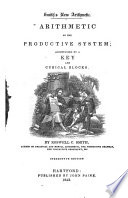 | Roswell Chamberlain Smith - Arithmetic - 1843 - 320 pages
...the means is 21,600, which, being divided by one of the extremes, gives a quotient of 720. That is, multiply the second and third terms together, and divide the product by the first; the quotient will be the fourth term or answer. A. $720. 14. If 20 pounds of butter cost 65, what will... | |
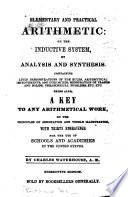 | Charles WATERHOUSE - Arithmetic - 1844 - 228 pages
...term, write the less of the two remaining numbers for the second term, and the other for the first Multiply the second and third terms together, and divide the product by the first term, and the quotient will be the answer. If the first and second terras be compound numbers, reduce... | |
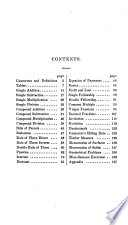 | William Watson (of Beverley.) - 1845 - 188 pages
...Bring the first and third into one name, and the second into the lowest name mentioned in it. 3. — Multiply the second and third terms together and divide the product by the first, the quotient will be the answer to the question in the same name the second term was brought into.... | |
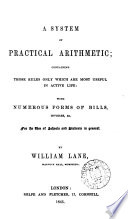 | William Lane (of Worthing.) - 1845 - 138 pages
...necessary, to the same name, and reduce the third term to the lowest denomination it contains. Then multiply the second and third terms together, and divide the product by the first term, and the quotient will be the answer to the question, in the same denomination that the third... | |
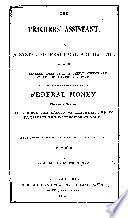 | Arithmetic - 1845 - 196 pages
...VULGAR FRACTIONS. RULE. Prepare the given terms, if necessary, and state (hem as in whole numbers ; multiply the second and third terms together, and divide the product by the first Or, Invert the dividing term, and multiply the three terms together, as in Multiplication. EXAMPLES.... | |
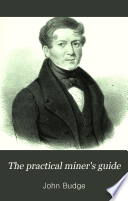 | John Budge - 1845 - 248 pages
...SHROUD-LAID* ROPE. RULE — State the question as in direct proportion, square the first and third terms, multiply the second and third terms together, and divide the product by the first. EXAMPLE. How many standard yarns, or threads, are there in a 14-inch capstan rope ? in. yarns. in.... | |
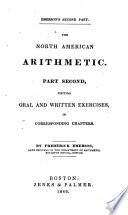 | Frederick Emerson - Arithmetic - 1846 - 266 pages
...than the third, make the less of the two remaining terms the second term, and the greater the first. Multiply the second, and third terms together, and divide the product by the first term: the quotient will be the fourth term, or answer. If there are different denominations in the... | |
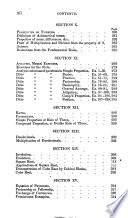 | James Bates Thomson - Arithmetic - 1846 - 354 pages
...term, and t/ce other for the first. III. Finally, multiplying the second and third terms together, divide the product by the first, and the quotient will be the answer in the same denomination as the third term. PROOF. — Multiply the first term and the answer... | |
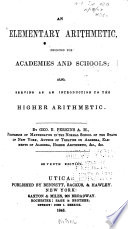 | George Roberts Perkins - Arithmetic - 1846 - 266 pages
...written the three terms of the proportion, or, at usually expressed, having stated the question, then multiply the second and third terms together, and divide the product by <A« first term. :!:NoTE. — Since there is a ratio between the first and cond terms, they must be... | |
| |